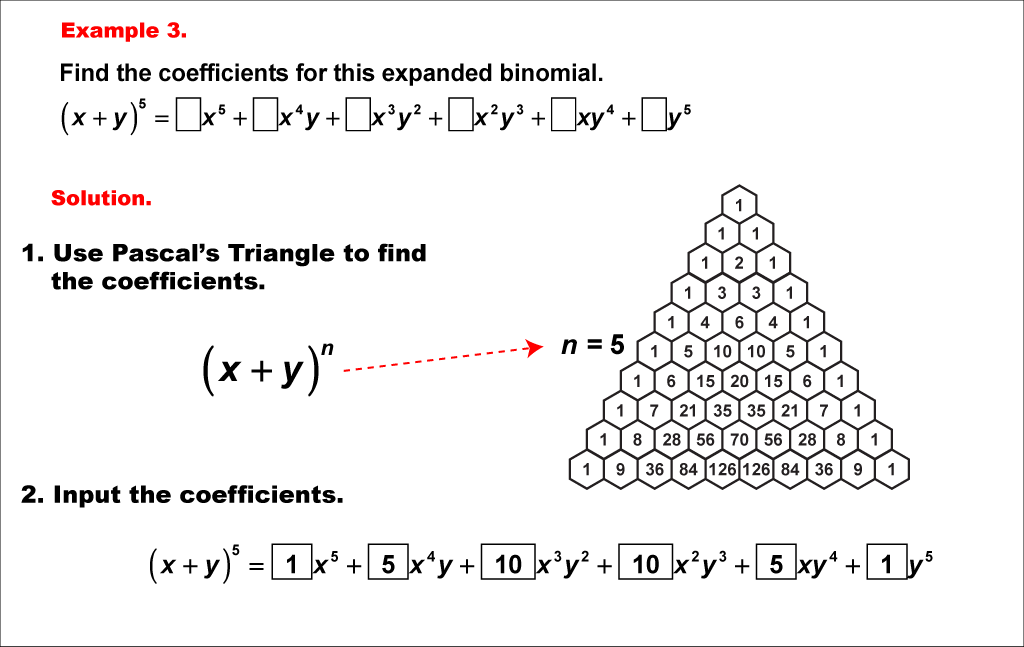
Display Title
Math Example--Polynomial Concepts--Pascal's Triangle: Example 3
Display Title
Math Example--Polynomial Concepts--Pascal's Triangle: Example 3

Topic
Polynomials
Description
In this example, we explore the binomial expansion of (x + y)5 using Pascal's Triangle. Our goal is to determine the coefficients for the expanded expression (x + y)5 = _x5 + _x4y + _x3y2 + _x2y3 + _xy4 + _y5, where the blanks represent the coefficients we need to find.
Pascal's Triangle continues to be our powerful ally in generating coefficients for binomial expansions. Each row of the triangle corresponds to the coefficients of a specific power of a binomial expression. For this example, we utilize the sixth row of Pascal's Triangle (n = 5) to obtain the sequence 1, 5, 10, 10, 5, 1, which provides the coefficients for our expansion.
Studying a variety of binomial expansion examples is crucial for students to develop a deep understanding of the concept. As they work through different powers and observe the resulting patterns, students enhance their grasp of algebraic structures and combinatorial thinking. These examples highlight the beautiful symmetry and predictability in mathematical patterns, encouraging students to explore more complex polynomial expressions with confidence.
Teacher's Script: Let's tackle the expansion of (x + y)^5 using Pascal's Triangle. Can you spot the pattern forming? We'll use the row for n = 5, giving us 1, 5, 10, 10, 5, 1. Now, watch how we apply these coefficients: (x + y)5 = _x5 + _x4y + _x3y2 + _x2y3 + _xy4 + _y55. Do you notice how the middle coefficients are the same? This symmetry is a key feature of Pascal's Triangle!
For a complete collection of math examples related to Polynomials click on this link: Math Examples: Pascal's Triangle Collection.
| Common Core Standards | CCSS.MATH.CONTENT.HSA.APR.C.5 |
|---|---|
| Grade Range | 8 - 10 |
| Curriculum Nodes |
Algebra • Polynomials • Polynomial Expressions |
| Copyright Year | 2021 |
| Keywords | Pascal's Triangle, binomial expansion |